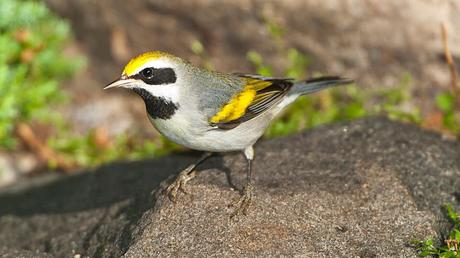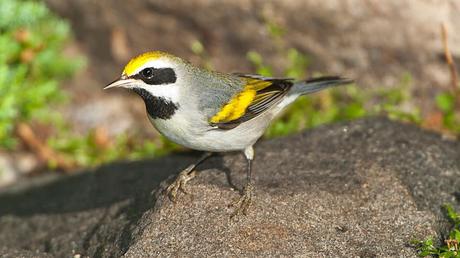Punxatawney Phil, the central character of the annual winter ritual known as Groundhog's Day, isn't great at his job. His predictions are more often wrong than right.
On Friday, the fortune-telling groundhog did not see his shadow, indicating an early spring. Although technically winter ends on the vernal equinox, which falls on the evening of March 19.
But the marmot is just one of many animals that, according to folklore, possess an uncanny ability to predict the weather, including cows that are said to lie down before the early rains, and woolly bear caterpillars that are supposedly with less color decorated before a freezing winter. .
Most of these associations are unrelated to modern science - but there is the occasional dash of documented fact in the myths.
Phenology is the study of how seasonal events in the lives of plants and animals change depending on weather and climate, such as how fish or migratory birds respond to the temperature of water and air. (For the record, the field can be practiced as a hard science and is completely different from the pseudoscientific "phrenology.")
The USA National Phenology Network tracks when ecological markers of spring arrive in the United States - and the season is already in bloom in certain locations on the East and West Coasts.
Theresa Crimmins, director of the U.S. National Phenology Network, said that while Punxatawney Phil is not a reliable predictor of the arrival of spring, phenology does provide scientific support for other seemingly superstitious axioms about the natural world.
"Humans have been observing environmental conditions for many millennia, basically as long as humans have existed," Crimmins said. "So many of these statements actually work because they capture, in a sense, the relationships between environmental conditions and plant responses."
The story continues
But while folklore often assumes that animal behavior predicts future weather conditions, in reality flora and fauna respond to weather and climate.
Plants and their predictions
Groundhog Day's roots lie in traditions likely imported to the United States from Germany, where the winter prediction animal was a badger instead of a groundhog.
However, numerous time-tested proverbs about the natural world come from Native American people.
"An example is planting corn when oak leaves are the size of a squirrel's ear," according to an article on phenology from the University of Wisconsin-Madison. "You know planting corn has nothing to do with oak leaves or squirrels. However, Native Americans noted centuries ago that the soil was warm enough to keep the seeds from rotting, but it was still early enough to reap a suitable crop if corn was planted at that time."
Crimmins points out that there are many other predictors of coming ecological events, described in the leaves, berries and flowers of plants.
For example, the shadeberry is a small tree native to parts of eastern North America, and it is believed that its name comes from the fact that it bears flowers at the same time of year that shad fish begin their river migration. The Lenape and other Native American peoples noticed the phenomenon long ago and were preparing to go fishing when the plant began to bloom.
Animals and severe weather


The Old Farmer's Almanac has collected a few dozen sayings about insects, animals and their ability to predict weather patterns.
Some claims are questionable. For example, dogs eating grass are probably a much less accurate predictor of rain than a meteorologist's weather report.
But there is research to suggest that some animals possess an innate sense that helps them detect when a disaster is coming.
Golden-winged warblers, for example, evacuated an area in Tennessee more than 24 hours before a devastating series of tornadoes hit the area, according to a December 2014 study published in the journal Current Biology.
The study authors predicted that the migratory birds were listening for infrasound - sound at frequencies too low for humans to hear - associated with the storms, and considered it a warning signal.
Researchers in Germany also looked at whether different animal species could detect an approaching earthquake. The scientists found that animals including cows, sheep and dogs showed increased activity before an earthquake up to 20 hours in advance, according to a report by Germany's Max Planck Society, a nonprofit organization of research institutes.
Insects and frogs
There is also truth to the idea that crickets can act as nature's thermometer. The insects are ectotherms, meaning their body temperature changes with that of their environment - and they routinely chirp faster in warmer weather.
According to Dolbear's Law, a formula that describes this association between crickets and the weather, "you can count the number of chirps per 15 seconds, add 40, and that will give you the temperature in Fahrenheit," notes the National Oceanic and Atmospheric Administration op.
Frogs also make unique sounds when it rains.
"Many 20th century herpetologists have confirmed and clarified the traditional observation that different species of frogs sometimes emit a distinctive voice, a 'rain call,' shortly before wet weather," said Dr. Gordon Miller, professor emeritus of environmental studies. at Seattle University, via email.
The calls "may be caused by a rise in humidity prior to precipitation," Miller said.
Fact versus folklore
However, other statements about the ability of animals to predict seasonal conditions are wrong.
The woolly bear - a type of caterpillar also called the woolly worm - is said to predict the severity of the approaching winter with its colored bands. More black coloration on the insect probably indicates harsher conditions along the way.
But in reality, the caterpillar's color is based on how long the caterpillar has been feeding, its age and species, according to the National Weather Service. "The better the growing season is, the greater the growth will be. This results in narrower red-orange bands in the center. The width of the stripes is therefore an indicator of the growth of the current or past season and not of the severity of the coming winter."
Climate change and phenology
Unusual animal behavior may also be a response to a changing climate, Crimmins pointed out. And often not in a good way.
The climate crisis and human development are causing all kinds of ecological problems, Crimmins noted. For example, bears go into hibernation later and emerge earlier because of the warmer weather. That could lead to more human-bear interactions as bears search for food, and there are concerns about how shorter hibernation periods affect bear pregnancies.
Miller added that while frogs are able to predict coming rainfall, "as so many amphibian species continue to decline due to various environmental and climatic factors, perhaps their clearest call to us today is, as Rachel Carson noted about birds in 1962, is their diminishing chorus and increasing silence.
For more CNN news and newsletters, create an account at CNN.com
